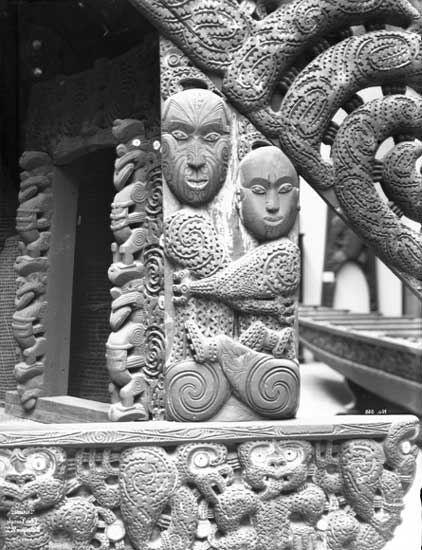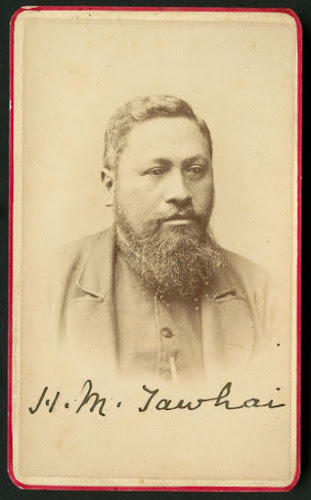Raupatu and Remembrance: The New Zealand Settlements Act
When dates were being considered for the first Rā Maumahara
commemorating the New Zealand Wars one suggestion that was floated was 3
December. It does not mark the anniversary of any particular battle or
conflict. Instead, on this day in 1863 Governor George Grey signed into law the
New Zealand Settlements Act, an innocuous-sounding piece of legislation that
was to have devastating consequences for many Māori communities.
The Settlements Act provided the primary legislative
mechanism for raupatu – sweeping land confiscations that were supposedly
intended to punish acts of ‘rebellion’ while also recouping the costs involving
in fighting the wars. It declared that where ‘any Native Tribe or Section of a
Tribe or any considerable number thereof’ had committed acts of ‘rebellion
against Her Majesty’s authority’ since 1 January 1863 their lands could be
declared subject to the Act and seized for the purposes of settlement. It was
part of a package of measures passed by the all-Pākehā Parliament to crush
Māori independence.
Grey and his ministers had drawn up these confiscation plans
prior to invading Waikato in July 1863 and had begun recruiting military
settlers who were to be offered a portion of the seized lands in return for
their services by August. Confiscation was not an afterthought or a response to
Māori actions but an integral part of the overall invasion plans. The presence
of military settlers on a portion of the seized lands would ensure the conquest
of these was made permanent while the sale of the remainder on the open market
would pay for the whole scheme. Māori would effectively underwrite the costs of
their own suppression.
It was war entered into partly as a speculative venture and
with deep roots in British imperial practice. A similar scheme of plantation
had been used in seventeenth-century Ireland. Ironically, many of the troops
brought to New Zealand to fight these wars of conquest for the Crown centuries
later were Irish Catholics whose own communities had suffered exactly the same
fate. Victims of imperialism in this way became its perpetrators.
Former Chief Justice Sir William Martin also pointed to the
example of Ireland in predicting that ‘a brooding sense of wrong’ passed down
from one generation to the next would be exactly the same outcome if
confiscation was employed in New Zealand. That, Henry Sewell privately thought,
was exactly what the architects of the policy wanted: to drive even more Māori
to offer resistance so that their lands could also be seized and sold as
punishment for these acts of ‘rebellion’.
 |
| James FitzGerald, PAColl-3060-040, ATL |
Within Parliament itself, James FitzGerald was one of few
MPs to offer anything like unequivocal opposition to the Settlements Act,
described by him as an ‘enormous crime’ and ‘contrary to the Treaty of
Waitangi’. As Native Minister two years later FitzGerald was personally
responsible for some of the largest land confiscations under the Act. In
another case of poacher turned gamekeeper, Sewell underwent a similar
conversion. Few Pākehā in positions of power came out of the story unsullied.
In all, more than 3.4 million acres of land was confiscated
under the Settlements Act across many districts – in Waikato, Taranaki,
Tauranga, eastern Bay of Plenty, and Mohaka-Waikare. Further lands were ‘ceded’
to the Crown at Tūranga, Wairoa and Waikaremoana under a distinct confiscation
regime covering the East Coast region. Despite repeated and unambiguous
promises that Māori who did not take up arms against the Crown would have their
lands guaranteed to them in full, confiscation was applied indiscriminately,
even taking in areas owned by those who had fought on the government side.
 |
| Land confiscations, https://tiritiowaitangi.govt.nz/maps/landconfiscations.php |
‘Loyal’ Māori could apply for compensation for their losses
– initially in money but later including lands. But the Compensation Court
process that followed returned only a fraction of what was lost, often in
completely different areas and always under a new legal form of title that
meant many of these lands were quickly lost to their owners. Māori deemed to
have rebelled, or even to have aided or abetted others who had done so, were
ineligible to receive compensation at all. In one case, officials tried (but
failed) to block compensation being given to an Anglican priest of Tainui
ancestry who had conducted burial services for those slain during the Waikato invasion.
Fearing that sweeping and excessive confiscations would
prolong Māori resistance and thereby increase the military and financial
burdens on British taxpayers, the British government sought to impose a range
of restrictions on how the Settlements Act would be implemented. Most of these
were ignored. Rather than intervening to stop what they knew was a gross
injustice, ministers in London washed their hands of the matter, concerned only
with how soon they could withdraw their troops from New Zealand.
 |
| Duncan Cameron, PA2-1855, ATL |
Many of those soldiers, including their commander, Lieutenant-General
Duncan Cameron, had become increasingly disillusioned with what they were being
asked to do, and began to query why they should fight a war of conquest and
dispossession for the exclusive benefit of New Zealand settlers. The 1863 Act
was clear that lands could only be confiscated if they were eligible sites for
settlement. But so wholesale were the takings that mountains, hills, lakes,
swamps and other sites were included. Vast areas that had been confiscated
remained unsettled and unsold. Many of these lands still form part of the Crown
estate today.
Far from turning a quick profit, the Crown was plunged deep
into debt. In 1869 one government minister, Donald McLean, openly admitted that
the confiscation policy had been an ‘expensive mistake’. By that time, many of
the military settlers – lacking farming experience or capital, and living in
the middle of active war zones – had sold their sections cheaply as soon as
they could and walked away. In the Waikato, Auckland speculators such as Thomas
Russell and Frederick Whitaker, leading proponents of the confiscation policy
as members of government in 1863, personally acquired many of these lands. Once
land prices recovered they stood to make enormous profits from their investments.
 |
| Pre-war Māori traders at Ōnehunga, B-045-001, ATL |
A few Pākehā got very rich and many of the lands later
became lynchpins of New Zealand’s booming pastoral economy. But for Māori on
the receiving end, the results were shattering. Through the two decades after
1840 Māori were in many ways the leading drivers of New Zealand’s economy,
producing much of its export income, while also feeding hungry settlers in
towns such as Auckland. That economic infrastructure was destroyed almost
literally overnight as cattle and crops were seized or destroyed, flourmills
and homes in many cases torched and the lands that had been key to this wealth confiscated.
The Māori economy was delivered a near fatal blow.
That was not something that could be easily or quickly overcome.
Generations of Māori were condemned to lives of landlessness and poverty. In
many ways we still live with the legacy of the New Zealand Settlements Act
today. It is there is the negative socio-economic statistics of many Māori
communities in those regions subject to raupatu. Treaty settlements have helped
to recapitalise many iwi, allowing them to again become major players in the
New Zealand economy. But given these settlements typically represent no more
than about 1-2% of the unimproved value of the lands that were taken, they are
never going to fully compensate for all that was lost.
Many Pākehā have little idea of this history or how it
continues to reverberate. That is hardly surprising given how few people learn
anything about it at school. It is time to do something about that. It is time
we as a nation owned up to our past. That is bigger than Treaty settlements. It
is about dialogue and mutual understanding. And that is why the story of the
New Zealand Settlements Act is one that should be more widely known. Beneath
the deceptively anodyne name lurks a darker tale of dispossession and colonial
greed whose consequences are still felt today.
[First published in E-Tangata, December 2018]




Comments
Post a Comment